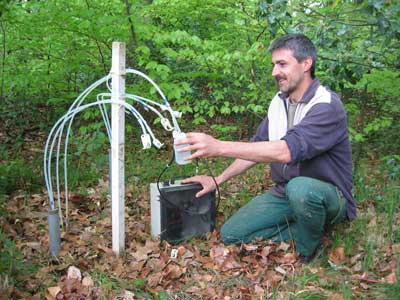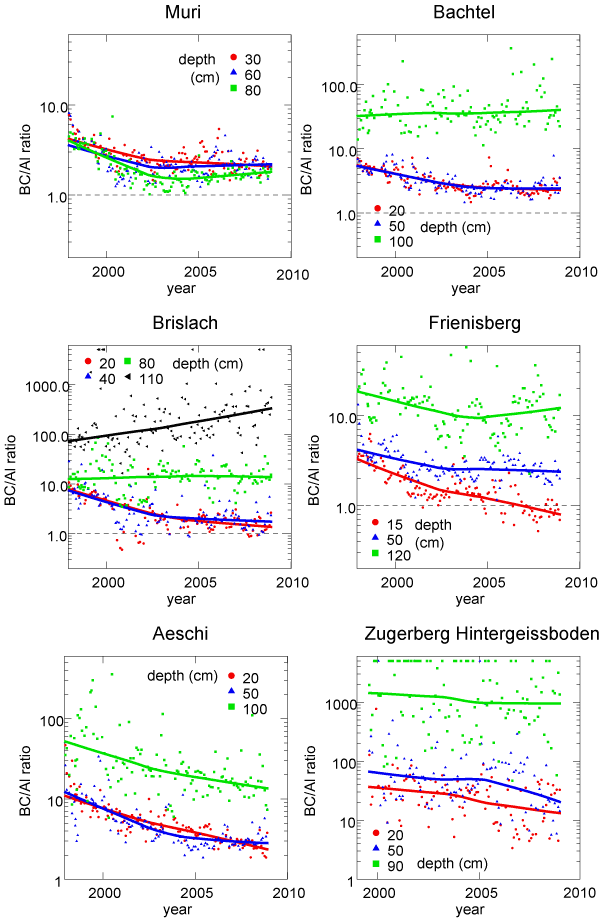In
principle, soil acidification is a natural process. The acidifying
nitrogen and sulphur compounds which are deposited to the forest, however,
accelerate this process considerably. In Switzerland, 70% of the
acidifying substances are nitrogen compounds. Model calculations confirm
the importance of the anthropogenic inputs for the rapid soil
acidification which presents one of the major threats for forest health.
It is causing a depletion of the important plant nutrients calcium,
potassium, magnesium (base cations, abbreviated BC). Their proportion on
the ion exchangers of the soil, together with sodium, is called base
saturation. A base saturation below 40% is regarded to be low, below 15%
critically low and below 5% very critically low. For a sustainable
management and forest stability, a base saturation of >50% is thought
to be sufficient for deciduous forest and >40% for coniferous forest.


